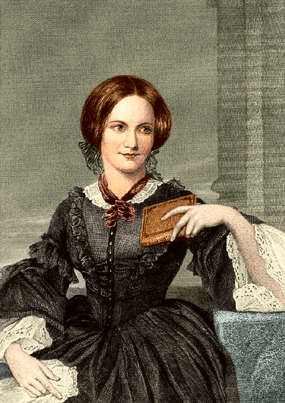The Brontë Story Revisited

Out on the Wily, Windy Moors
by Barney Bardsley
I remember the moment I heard it first: an unearthly, high-pitched wail from a young Kate Bush, pleading with her Heathcliff to “Come home. I’m so co-o-old. Let me in at your window-oh! Oh!” It was 1978. ‘Wuthering Heights’, her debut single, had gone straight to Number One and stayed there for four weeks. I had no idea who she was. I was on a year abroad as part of a languages degree, and had my head stuck underwater in a Dusseldorf swimming pool, when the thin, steely reed of Bush’s voice pierced the sound system, and refracted through the water waves like a ghost from a far off planet. It was breathtaking.
“Who on earth is that?” I asked my mother, visiting from England. “Oh, that’s Kate Bush – she’s the latest sensation,” my mother replied airily, pleased to parade her superior knowledge of pop culture. “Only 18-years-old, but she’s caused a real storm back home.”
I have just watched some footage of Bush performing that iconic song on YouTube. All in white and swirling around the stage, arms flailing, eyes popping. The video techniques may seem outdated now, but Bush is still mesmerising – and somehow shocking. Both sexual and innocent, and madly beautiful.
“A symbol of female power”
Scroll back in time to 1847, when Emily Brontë, disguised as Ellis Bell, published the original text of Wuthering Heights. It’s hard to imagine the buttoned-up public’s reaction to her feverish story of Heathcliff and Cathy – their brutal and tragic passion. One thing is for sure: no matter how strange Kate Bush seemed in 1978 in her Brontë-esque incarnation, the literary Cathy of 1847 was a thousand times more haunting, extravagant and possessed.
Wuthering Heights is revered by many as a groundbreaking work of genius, where the Yorkshire landscape – with its windy moors, twisted trees, harsh and huge skies – has a personality every bit as integral to the plot as the humans who live there. I re-read the book recently, and was distinctly underwhelmed. With my brisk contemporary eye, I found the characters mean, sulky and selfish – their lives unremittingly violent. I did not care for the dark and vicious Heathcliff. And Cathy? A moody brat. The whole confection seemed overwrought and overblown.
But context is all. Emily is just one of a remarkable family of three writing sisters, who together formed a crucible of literary invention, which shook the literary and social scene to its boots in the nineteenth century – and whose ideas and passion still resonate today. Emily was of her time – and beyond it. No matter whether I like her or not – she was a symbol of female power and defiance in a difficult time.
“Burst into print”
There were six Brontë children – two of whom, Maria and Elizabeth, died before puberty, and none of whom lived to see their fortieth birthday. This was not unusual in those days. Life was hard and short. They were born in Thornton, near Bradford, but in 1820 moved to Haworth Parsonage in the Pennines with their father, the Reverend Patrick Brontë (their mother died young). Haworth was a crowded little industrial town, perched 800 feet high in the Pennine rocks. This was the machine age, with mills, factories and mines littering the northern landscape. Life was tough. Average life expectancy – a mere 25-years.
But the Brontës were not to be factory fodder. Their father had literary pretensions. He ensured that his girls were educated – unusual for the time – with startling and far reaching results. The family were not rich. So the girls were expected to work as governesses and teachers. They endured this for a while, but never relished it.
Then, despite hardship, both fiscal and physical (poverty and consumption were epidemic) the three surviving sisters, Charlotte, Emily and Anne, burst into print – under the male pseudonyms, Currer, Ellis and Acton Bell. In 1847, Charlotte published Jane Eyre; in the same year came Emily’s Wuthering Heights; and Anne, the youngest, followed on, in 1848, with The Tenant of Wildfell Hall. The website of the Brontë Parsonage Museum is understandably hyperbolic: “To find two writers of genius in one family would be rare, but to find several writers in one household is unique in the history of literature.”
“Stripped and bereaved”
Branwell, the only boy Brontë, joined his sisters in early literary endeavour. They all wrote wild-spun fables as children. Sticking close together in their odd imaginary world, up on the wild moors. A suffocating, insular, love knit band of siblings. The girls did well, but Branwell went to the bad. Training as an artist, only to fall under the spell of alcohol and Sister Morphine.
From this volatile and curious household, the one who emerges as the true star, to my biassed eye, is Charlotte Brontë. As the oldest surviving girl in a motherless household, she took on the mantle of little mama. Both educating and comforting her younger siblings. Much good it did her as she saw all three – first Branwell, then Emily, and finally Anne – die of TB within the space of a mere twelve months. She says, poignantly: “A year ago – had a prophet warned me how I should stand in June 1849 – how stripped and bereaved, I should have thought this can never be endured.”
“A rallying call”
Although poor, dear Charlotte – less than five feet tall, slightly built, myopic, and in her own opinion, quite plain – did snatch some happiness, when she married Arthur Bell Nicholls in 1854. She was to die herself, just a year later, at 38, in the early stages of pregnancy.
She lives on, of course, in her towering masterpiece Jane Eyre. The eponymous heroine, plain, stoical, strong minded. Surviving both a cruel childhood and harsh duplicity from her beloved Mr Rochester only to offer both compassion and forgiveness at the story’s end, is so surely based on aspects of herself. And if she is the light – then the mad, confined Bertha up in the attic is doomed to be her shadow. Charlotte’s writing style is as passionate as Emily’s. But it is much more lucid, humane – and curiously modern.
Her life, like that of her sisters, is a fascinating example of how nineteenth century women survived. Their spirit intact, amidst an adversity it is now almost impossible to imagine. And all with a rallying call to women’s emancipation. Says Jane Eyre defiantly: “I am a free human being with an independent will.” It is not out of place at all in the twenty-first century.
Images courtesy of The Brontë Parsonage Museum











